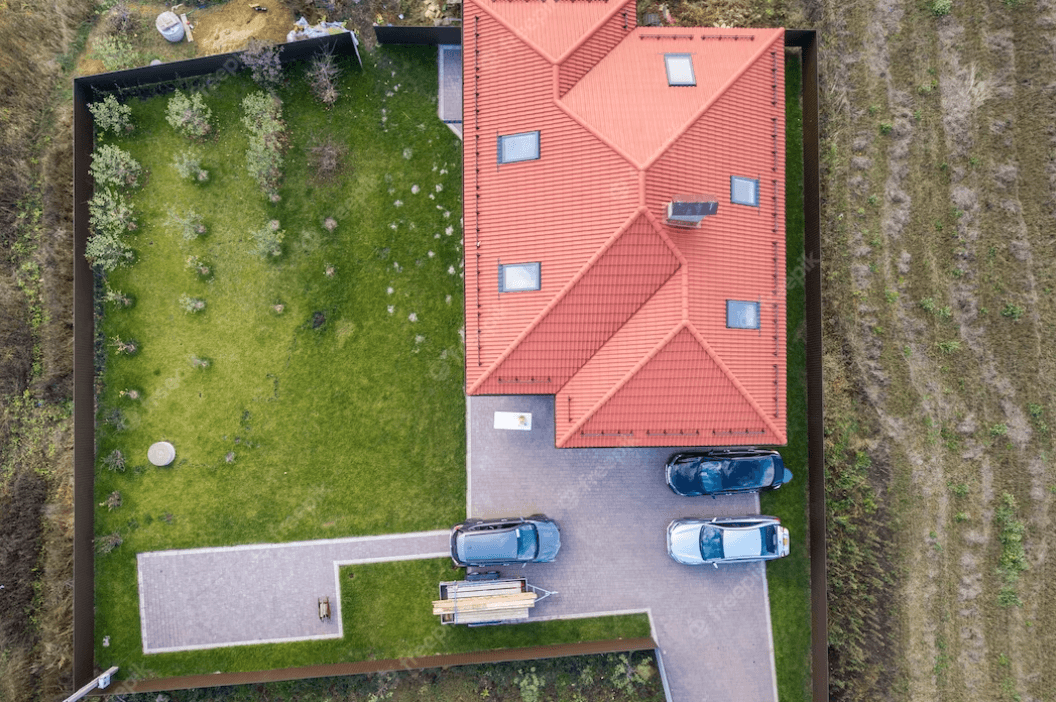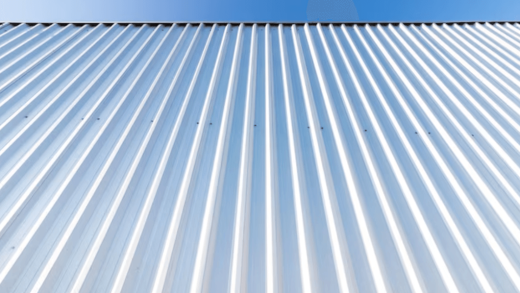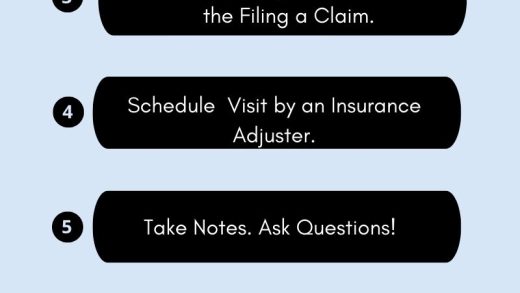Drone Roof Inspections
When it comes to maintaining the safety and longevity of a building, roof inspections are crucial. However, traditional methods can be time-consuming, expensive, and even dangerous for inspectors. Enter drone technology – revolutionizing the roofing industry with its numerous benefits including increased safety, speed, accuracy, and cost-effectiveness. In this blog post, we will explore everything you need to know about drone roof inspections – from their process and requirements to their advantages over traditional inspections. So buckle up and let’s take flight into the world of drone roof inspections!
Benefits of Drone Roof Inspections
Drone roof inspections have revolutionized the roofing industry by providing a safer, faster, and more efficient way of inspecting roofs. The benefits of drone technology in roof inspections are numerous and cannot be ignored.
One major benefit is safety.
Traditional roof inspections can be dangerous for the inspector as they require climbing ladders or walking on steep roofs. With drone technology, inspectors can operate from the ground while still being able to access difficult-to-reach areas.
Another advantage is efficiency and speed.

Drones can cover large areas quickly and provide high-resolution images that enable inspectors to identify any damage or potential issues with precision.
In addition, accuracy and detail are significantly improved when using drones for roof inspections compared to traditional methods.
Drones capture detailed imagery that enables inspectors to see every inch of a rooftop without missing anything.
Cost-effectiveness
is also an important benefit of drone roof inspections since it eliminates the need for costly equipment such as scaffolding or cranes which would otherwise have been necessary for traditional inspection methods.
These benefits make it clear that drone technology has transformed the roofing industry by providing a safer, faster, more accurate, and cost-effective way to inspect rooftops.
Safety and Accessibility
Drone roof inspections offer significant benefits to the roofing industry. One of these benefits is improved safety and accessibility during a roof inspection. Traditional inspections require inspectors to climb onto roofs, which can be dangerous and time-consuming. With drone technology, inspectors no longer need to risk their safety by climbing up ladders or using harnesses.
Drones are equipped with cameras that provide high-resolution images of the entire roofing system without any physical contact with the surface itself. This means that even hard-to-reach areas such as steep pitches or locations above sharp angles can be accessed easily, providing new levels of accuracy in assessing damage.
Moreover, drones eliminate risks associated with working at heights for extended periods of time. Not only does this minimize potential accidents on site but also ensures compliance with Occupational Health and Safety regulations.
In addition, a drone roof inspection may not disrupt daily operations at a property since it does not require shutting down any part of the premises as opposed to the traditional method where setting up scaffolding could take days disrupting business activities.
Drone technology makes it possible for professional roofers to perform safer and more efficient inspections while minimizing disruptions caused by traditional methods.
Efficiency and Speed
One of the most significant benefits of using drones for roof inspections is the efficiency and speed they offer. With traditional inspection methods, it can take several hours or even days to inspect a large commercial building’s roof. However, with drone technology, this process can be completed in a matter of minutes.
Drones equipped with high-resolution cameras and sensors can collect accurate data about the condition of roofs quickly. This makes it easier for roofing professionals to identify any issues that need repairs or maintenance promptly.
Speedy drone inspections are especially useful after natural disasters like hurricanes or storms when there may be multiple buildings that require inspection immediately. Drones allow inspectors to work more efficiently and cover more ground faster than traditional methods would permit.
Moreover, drones’ ability to fly at different heights and angles allows them to capture detailed information on hard-to-reach areas easily. Roofing professionals no longer need tall ladders or scaffolding equipment, which not only increases safety but also saves time during inspections.
Efficiency and speed are two crucial advantages that make drone roof inspections an essential tool in the roofing industry today.
Accuracy and Detail
One of the biggest benefits of drone roof inspections is their ability to provide highly accurate and detailed data. With drones, you can capture high-resolution images and videos that allow for a comprehensive view of every aspect of your roof.
Drones equipped with specialized sensors can also detect temperature changes, moisture levels, and other important factors that traditional inspection methods may miss. This level of precision means that any issues with your roof can be identified quickly and accurately.
In addition to identifying current problems, drone inspections also help prevent future ones by providing detailed information about the overall condition of your roof. By spotting potential problem areas early on, you’ll have time to address them before they turn into major issues.
The accuracy and detail provided by drone roof inspections make them an invaluable tool for homeowners and roofing professionals alike. Whether you’re looking to maintain your home or manage a commercial property, investing in a drone inspection can save you time, money, and stress in the long run.
Cost-Effectiveness
One of the major benefits of using drone technology for roof inspections is its cost-effectiveness compared to traditional inspection methods. Drones are equipped with high-resolution cameras that can capture detailed images, eliminating the need for manual labor and additional equipment.
With traditional inspections, a roofing company would have to send out a team of workers to climb up on the roof and manually inspect each area. This process takes time, effort, and money. Not only do you have to pay for labor costs but also safety gear such as harnesses and ladders.
Drone inspections allow companies to save both time and money since they require fewer resources than traditional inspections. The use of drones eliminates the need for scaffolding or other large equipment needed in some cases of manual inspection.
Additionally, because drones can cover more ground at once from different angles, they reduce human error which could lead to missed problem areas when conducting an inspection manually. With no errors in detection, there won’t be any surprise maintenance expenses down the line due to problems being overlooked during an inspection.
Drone roof inspections help businesses who want accurate data that’s collected quickly without breaking their budget, making it an ideal solution towards maintaining roofs in today’s fast-paced world.
Understanding the Process of a Drone Roof Inspection
Drone roof inspections are becoming increasingly popular in the roofing industry due to their numerous benefits. It’s important to understand how a drone roof inspection works and what is involved in the process.
First, the drone operator will survey the area around the property to ensure it is safe for flight. Once they have identified a safe location, they will launch the drone and begin flying it over the building.
The drone will capture high-quality video footage of every inch of your roof, including areas that would be difficult or impossible to reach with traditional methods. This footage can then be reviewed by experts who can identify any potential issues or damage.
One major advantage of using drones for roof inspections is that they provide incredible accuracy and detail. The high-resolution cameras used on drones capture detailed images that allow inspectors to see even small cracks or other signs of damage.
Understanding how a drone roof inspection works can help you decide whether this technology could benefit your project or property. By working with an experienced team, you can ensure that your property remains in top condition and avoid costly repairs down the line.
Requirements for Conducting a Drone Roof Inspection
Conducting a drone roof inspection is not as simple as just flying a drone over the building. There are specific requirements that must be met to ensure safety, legal compliance, and accurate results.
The first requirement for conducting a drone roof inspection is equipment needs. This includes having the right type of camera, battery life, and range for the task at hand. It’s important to have backup equipment in case anything malfunctions during the inspection.
Legal and regulatory considerations are also crucial when it comes to conducting a drone roof inspection. The operator must have proper certification from the Federal Aviation Administration (FAA) and comply with any local regulations regarding drones.
Operator skills are another key requirement for conducting successful drone inspections. The operator must know how to fly the drone safely, interpret images correctly, and identify potential issues or hazards on the roof.
Before hiring a company for your next project, make sure they meet all these requirements. Don’t be afraid to ask about certifications, past experience with similar projects, and their process for handling unexpected obstacles during an inspection.
Equipment Needs
To conduct a successful drone roof inspection, you need to have the right equipment. Having top-of-the-line equipment can make all the difference in capturing high-quality footage and data. First and foremost, you will need a reliable drone with a high-definition camera that is capable of capturing detailed images of your roof.
In addition to the drone itself, you will also need spare batteries to ensure that the inspection process isn’t interrupted by a dead battery. It’s crucial to have enough backup power for longer inspections or more extensive roofs.
Along with extra batteries, it is essential to have multiple memory cards on hand. You don’t want the memory card filling up in the middle of an inspection! Always be prepared and bring along additional storage options.
Consider investing in specialized accessories such as propeller guards or landing pads. These additional items can help protect both your investment and any property around you while conducting an inspection.
Having quality equipment ensures safety during operation and allows for accurate data collection throughout each stage of your drone roof inspection process.
Legal and Regulatory Considerations
When it comes to conducting drone roof inspections, legal and regulatory considerations should never be overlooked. As with any new technology, there are rules and regulations that must be followed to ensure safety and compliance with the law.
Firstly, operators of drones used for commercial purposes need to obtain a Remote Pilot Certificate from the Federal Aviation Administration (FAA). This certification involves passing an aeronautical knowledge test and undergoing background checks.
Additionally, all drone operations must comply with FAA guidelines such as flying below 400 feet above ground level and maintaining a visual line-of-sight at all times. Drone operators should also check local laws regarding privacy concerns or other restrictions on aerial photography within specific areas.
It’s essential to keep in mind that some states may have additional requirements beyond those set by the FAA. For example, insurance coverage for drone operations is mandatory in some states like New York.
By understanding these legal considerations and ensuring compliance before conducting a drone roof inspection, you can avoid potential penalties or legal issues down the road.
Operator Skills and Certification
The success of a drone roof inspection largely depends on the operator’s skills and certification. A skilled drone pilot knows how to navigate various obstacles, such as trees or power lines, while maintaining a safe distance from the property and people.
To ensure that an operator is capable of conducting a successful drone roof inspection, they must have proper training and certification. The Federal Aviation Administration (FAA) requires all commercial drone operators to hold a Remote Pilot Certificate with a Small UAS Rating.
This certification ensures that the operator has passed an FAA-approved test demonstrating their knowledge of airspace regulations, weather patterns, emergency procedures, and more. Additionally, operators should undergo periodic training to stay up-to-date with changes in regulations and best practices.
When hiring a drone roof inspection service provider, it’s crucial to verify that the operator holds the necessary certifications before allowing them to conduct any work on your property. Doing so will give you peace of mind knowing that experienced professionals are handling your roofing needs safely and efficiently.
Drone Inspection vs Traditional Inspection
When it comes to roof inspections, there are two primary methods: traditional inspection and drone inspection. Traditional inspection involves physically climbing onto the roof and conducting a visual assessment of its condition. While this method has been used for years, it can be time-consuming, costly, and risky for inspectors.
In contrast, drone technology offers an efficient and safe alternative to traditional inspections. With drones equipped with cameras and other sensors, inspectors can gather accurate data on roofing conditions without having to climb onto the roof themselves.
One key advantage of drone inspections is their ability to access hard-to-reach areas that may be inaccessible or dangerous using traditional methods. Drones can fly over steep roofs or inspect from angles that would otherwise require specialized equipment like cherry pickers or scaffolding.
Additionally, drones provide detailed images and video footage that enable inspectors to identify even small issues in roofing structures. This level of detail allows for more comprehensive assessments than what’s possible with physical examination alone.
While both traditional inspection and drone inspection have their pros and cons depending on factors such as accessibility needs or budget constraints – many roofing companies are increasingly turning towards implementing modern technologies such as drones into their business models in order to stay competitive within today’s fast-paced market environment allowing them greater precision whilst also improving overall safety standards when dealing with complex jobs which involve heights.
Tips for Hiring a Drone Roof Inspection Service
When it comes to hiring a drone roof inspection service, there are a few things you should keep in mind to ensure that you get the best results. Here are some tips for hiring a drone roof inspection service:
Check Certifications
Before choosing a company to conduct your drone roof inspection, make sure they have all the necessary certifications and licenses. This includes FAA certification and insurance.
Review Previous Work
Take the time to review previous work done by the company you’re considering. Look at their portfolio of past inspections to see if they have experience with similar roofing types and structures as yours.
Experience Matters
Choose an experienced team when it comes to drone technology in the roofing industry. While newer companies may offer lower prices, more experienced teams can provide better results due to their knowledge and practice.
Equipment Quality
Ensure that the equipment used by your chosen service provider is up-to-date with good quality cameras, sensors, GPS systems, etc. Make sure they invest in using the latest technologies which will produce accurate data for effective decision making.
Service Pricing
Pricing is important, but don’t let it be the only factor considered while selecting an operator. Ensure that the pricing offered matches what other reputable operators charge for the same level of services being provided.
By following these tips, you can find the right drone roof inspection service provider who can deliver fast, efficient, safe, and cost-effective assessments of your roofing situations through advanced camera technology from above!
Checking Certifications
When hiring a drone roof inspection service, it is crucial to check their certifications. This ensures that they have the necessary skills and knowledge to conduct a successful inspection while adhering to legal and regulatory requirements.
The Federal Aviation Administration (FAA) requires all drone operators to hold a Remote Pilot Certificate. This certification demonstrates that the operator has passed an FAA-approved training course and understands aviation rules and regulations.
In addition, some states may require additional licenses or permits for commercial drone operations. It’s important to verify that the company you’re considering has met these requirements before hiring them.
Another certification to look for is from the National Roofing Contractors Association (NRCA). The NRCA offers a Roofing Inspection Certification program which provides education on proper roofing practices as well as guidelines for conducting thorough inspections.
By checking a drone roof inspection service’s certifications, you can ensure that they are qualified, knowledgeable, and experienced in conducting accurate and comprehensive roof inspections using drone technology.
Reviewing Previous Work
Before hiring a drone roof inspection service, it’s crucial to review their previous work. This will give you an insight into the quality of their services and help you determine if they’re the right fit for your needs.
Start by checking out their website and social media platforms where they may have posted images or videos of previous inspections. Take note of the angles, clarity, and overall quality of their footage.
You can also ask for references from past clients. Contact them to learn about their experience working with the company in question. Ask about the level of professionalism displayed during the inspection process and how satisfied they were with the final report.
Another effective way to review a drone roof inspection service’s work is by looking at online reviews on third-party websites such as Yelp or Google Reviews. Pay attention to both positive and negative comments to get an idea about any recurring issues or praises.
The objective here is not just to pick out any flaws but rather gauge whether this particular company provides high-quality services that meet your individual requirements within your budget constraints so that you can make an informed decision when choosing between different providers.
The Role of Software in Drone Roof Inspections
The use of drone technology in roof inspections has brought about a new level of efficiency and accuracy to the roofing industry. However, the key to unlocking the full potential of this innovative approach lies in the software used to process and analyze data collected from drone flights.
One major advantage that comes with drone roof inspections is the ability to capture high-resolution images and videos of roofs from different angles. This wealth of visual information can be overwhelming for humans but is easily processed by specialized software designed for analyzing aerial imagery.
These programs can detect even slight changes in a roof’s condition, such as cracks or leaks, providing accurate measurements that enable contractors to make informed decisions about repair or replacement options. Additionally, some software can generate 3D models of roofs, allowing users to visualize complex structures and identify problem areas quickly.
In addition, incorporating machine learning algorithms into inspection processes enables more efficient analysis by automating repetitive tasks like image recognition and classification. This reduces costs while increasing productivity – making it possible for contractors to perform more thorough inspections faster than ever before.
Investing in quality software solutions is crucial for companies looking to benefit fully from using drones for roofing inspections. With advanced tools at their disposal, they can deliver superior results while providing timely service at competitive prices – an ideal combination for success in today’s fast-paced business environment.
Conclusion
The roofing industry has significantly benefited from drone technology, especially when it comes to roof inspections. Drones have made it possible to inspect roofs faster, more accurately, and at a lower cost compared to traditional methods.
Safety concerns are also addressed by using drones as inspectors can avoid potential risks that come with climbing up ladders or scaffolding. Drone technology has revolutionized the way we conduct roof inspections, enabling us to get accurate data and detailed images of any damage on rooftops.
When hiring a drone roof inspection service provider, ensure they meet all legal requirements and have the necessary certifications. Always review their previous work before making any commitments.
Drones offer many benefits over traditional roof inspection methods including speed, accuracy, detail, efficiency, and cost-effectiveness. With advances in software technology for drones increasing every day, the future looks even brighter for this industry. So why not consider incorporating it into your next roofing project?



